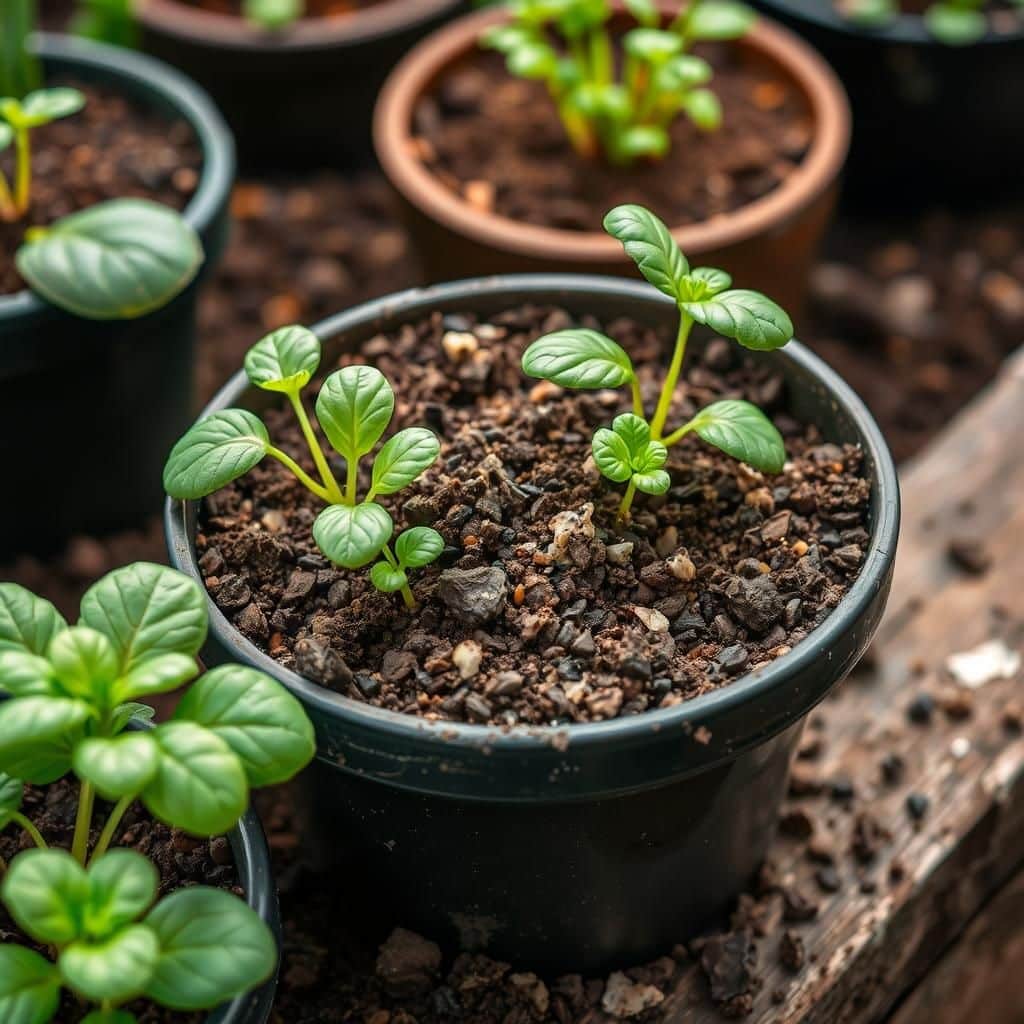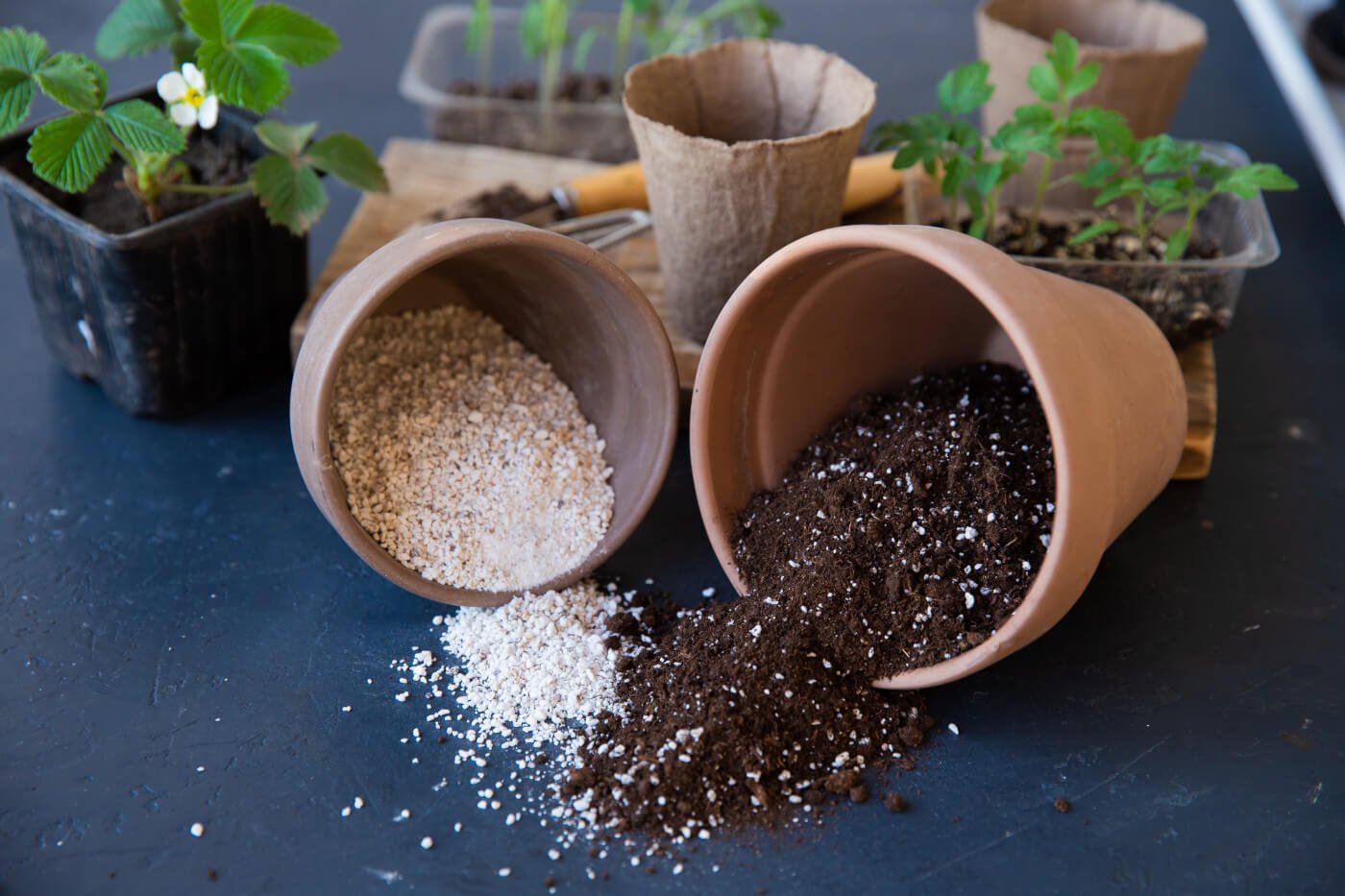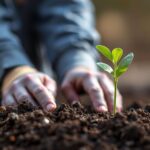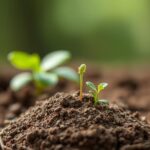How to Choose the Best Good Potting Mix for Vegetables: A Comprehensive Guide

Selecting the right potting mix is crucial for successful vegetable gardening, whether you're a seasoned gardener or just starting out. The right blend provides essential nutrients, promotes healthy root development, and ensures proper drainage and aeration. With a plethora of options available in garden centers, understanding the key ingredients and their benefits can be overwhelming. This comprehensive guide will help you navigate the intricacies of choosing the best potting mix for your vegetables, offering insights into what to look for and how to tailor your selection to meet the specific needs of your plants.
Choosing the Best Potting Mix for Vegetables
When selecting a good potting mix for vegetables, it is essential to consider the components that provide optimal growth conditions. A high-quality mix typically includes a combination of peat moss, coconut coir, and perlite, which together ensure excellent drainage and aeration. Additionally, incorporating organic matter such as compost enriches the soil with nutrients vital for healthy plant development. It is also important to choose a mix tailored to specific vegetable types, as some may require more moisture retention or specific nutrient levels to thrive, ultimately enhancing produce quality and yield.
Key Ingredients in Potting Mix
The effectiveness of a potting mix largely depends on its key ingredients. A blend of peat moss and coconut coir offers a good balance of moisture retention and aeration, while perlite or vermiculite improves drainage. These components create a light yet stable structure that supports root growth. Additionally, the inclusion of organic fertilizers or nutrients helps in sustaining the overall health of the plants, making it easier for gardeners to maintain optimal growth conditions.
Importance of Drainage
Good drainage is a crucial factor when choosing a potting mix for vegetables. Excess moisture can lead to root rot and other diseases that compromise plant health. An ideal potting mix would incorporate perlite or sand, which enhance drainage properties without hindering the mix's ability to retain necessary moisture. Properly drained soil allows the roots to breathe, ensuring that the plants receive an adequate supply of oxygen while preventing waterlogging.
Nutrient Content and Organic Matter
The nutrient content in a potting mix is essential for the growth of vegetables. Incorporating compost or well-rotted manure not only adds vital nutrients but also improves the soil structure. A mix rich in organic matter fosters beneficial microbial activity that can aid in nutrient availability. Selecting a potting mix with nutrients tailored for specific vegetables ensures that they receive the right balance of nitrogen, phosphorus, and potassium, essential for healthy growth and fruit production.
Customizing Your Potting Mix
Customizing your potting mix can lead to better results depending on the vegetable type. For instance, leafy greens may thrive in a mix with higher moisture retention, while root vegetables require a looser mix that allows for easier growth. Adding components like worm castings can boost nutrient levels, whereas adjusting the proportion of coir and perlite can enhance aeration. Tailoring the mix to meet the needs of different plants can significantly improve your gardening success.
Considerations for Container Size
The size of your containers also impacts the effectiveness of your potting mix. Larger containers typically require a heavier mix to retain moisture, while smaller pots may benefit from lighter blends to avoid excess moisture retention. As a guide, a mixture with higher perlite content is suitable for smaller pots, while larger containers can accommodate mixes rich in compost. Understanding the relationship between container size and potting mix composition helps optimize vegetable health and productivity.
| Component | Role |
|---|---|
| Peat Moss | Moisture retention |
| Coconut Coir | Soil structure and aeration |
| Perlite | Improves drainage |
| Organic Matter | Nutrient enrichment |
| Fertilizers | Provides essential nutrients |
What's the best potting mix for vegetables?

The best potting mix for vegetables typically contains a variety of ingredients that promote healthy root development, excellent drainage, and adequate water retention. A high-quality potting mix should ideally have a balanced structure composed of organic matter, inert materials, and nutrients. Here are the key components to consider when selecting the ideal potting mix for vegetable gardening.
Essential Components of Potting Mix
A good potting mix consists of several essential components that cater to the needs of vegetable plants. Understanding these ingredients helps gardeners choose the right mix.
- Peat Moss: This retains moisture and provides aeration.
- Compost: Rich in nutrients, it offers essential minerals and improves soil structure.
- Perlite or Vermiculite: These materials enhance drainage and aeration in the mix.
pH Level of Potting Mix
The pH level of your potting mix can significantly affect your vegetable plants' nutrient uptake. The optimal pH level for most vegetables is between 6.0 and 7.0, which is slightly acidic to neutral.
See also:
- Testing pH: Use a pH meter or test kit to determine the mix's acidity.
- Adjusting pH: You can amend the mix with lime to increase pH or sulfur to decrease it.
- Maintaining pH: Regular testing and adjustment can keep your mix suitable for healthy plant growth.
Moisture Retention and Drainage
A well-balanced potting mix should maintain adequate moisture while allowing excess water to drain away. This balance prevents root rot and encourages healthy growth.
- Water-Holding Capacity: Ingredients like peat moss and coconut coir can help retain moisture.
- Drainage Materials: Adding perlite or coarse sand improves drainage and prevents water logging.
- Layering Technique: Layering your potting mix with different textures can optimize both water retention and drainage.
Nutrient Content and Fertilization
Vegetables require various nutrients to thrive, and a good potting mix should offer a sufficient nutrient base or allow for easy fertilization.
- Slow-Release Fertilizers: These can be mixed into the potting soil to provide nutrients over time.
- Organic Additives: Materials like fish emulsion, bone meal, or seaweed extract enrich the mix.
- Regular Feeding: Plan to supplement with liquid fertilizers during the growing season for optimal results.
Organic vs. Synthetic Potting Mix
Deciding between organic and synthetic potting mixes can influence your gardening experience and the health of your vegetables.
- Organic Mixes: These are made from natural materials and promote sustainable gardening practices.
- Synthetic Mixes: These often contain chemical fertilizers that can provide quick results but may compromise soil health over time.
- Choosing Wisely: Consider the environmental impact and your gardening goals when selecting a mix.
What soil is best for planting vegetables?
:max_bytes(150000):strip_icc()/topsoil-vs-garden-soil-7501844-7d8db8d8a1aa4d85b91458b3e2597073.png)
The best soil for planting vegetables is typically a well-balanced garden soil that provides essential nutrients, adequate drainage, and good structure for root development. Vegetables thrive in soil that is rich in organic matter, has a pH level between 6.0 and 7.5, and contains a mix of sand, silt, and clay for optimal structure. Here are some important characteristics of ideal vegetable soil:
1. Nutrient-Rich: The soil should be amended with organic materials such as compost or well-rotted manure, which increases nutrient content.
2. Well-Draining: Excess water can lead to root rot and decreased productivity, so good drainage is vital.
3. Aeration: Soil should allow air to reach the roots, promoting healthy growth.
Understanding Soil Types
Different types of soil can affect vegetable growth in varied ways. Here are the primary soil types to consider:
- Sandy Soil: Drains quickly but lacks nutrients. Often requires frequent fertilization.
- Clay Soil: Retains moisture but can become compacted. Requires amendments to improve drainage and aeration.
- Silty Soil: Holds nutrients well and has good moisture retention but may drain too slowly if not managed.
Soil Testing
Testing your soil is crucial to determine its pH and nutrient levels. Regular soil tests help in improving the growing conditions for vegetables:
- pH Level: Ideal pH for vegetables is between 6.0 and 7.5. Adjust with lime or sulfur as needed.
- Nutrient Levels: Tests will indicate levels of nitrogen, phosphorus, potassium, and other essential nutrients.
- Organic Matter Content: Knowing the organic content will guide you on how much compost or peat moss to add.
Improving Soil Quality
Enhancing soil quality improves its structure and nutrient availability. Here are some methods to consider:
- Adding Organic Matter: Incorporate compost, aged manure, or leaf mold to enrich soil and improve structure.
- Cover Crops: Growing cover crops during off-seasons can enhance soil fertility and reduce erosion.
- Mulching: Applying organic mulch helps retain moisture and suppress weeds while gradually enriching the soil.
Choosing the Right Amendments
Different amendments can support vegetable growth based on the existing soil properties. Consider the following:
- Compost: A well-balanced source of nutrients that improves soil structure and feeds beneficial microbes.
- Bone Meal: A great source of phosphorus, beneficial for root establishment and flowering.
- Green Manure: Cover crops that are turned into the soil can enhance nitrogen levels and soil structure.
Maintaining Soil Health
Ongoing care of the soil is essential to sustain healthy vegetable production. Key practices include:
See also:
- Crop Rotation: Changing vegetable types grown in each area reduces pests and improves soil health.
- Regular Mulching: Helps retain soil moisture, suppresses weeds, and adds organic matter as it breaks down.
- Minimal Tillage: Reducing soil disturbance protects beneficial organisms and maintains soil structure.
What is the best potting soil for starting vegetables?

The best potting soil for starting vegetables should provide adequate drainage, good aeration, and essential nutrients. A high-quality potting mix typically contains a combination of organic matter, like compost, and other components like perlite or vermiculite for aeration and drainage. Here are some key factors to consider when selecting potting soil for your vegetable garden:
Ingredients to Look For
A suitable potting soil should contain several beneficial components to support vegetable growth effectively. The primary ingredients include:
- Peat Moss: Retains moisture while providing a rich environment for root growth.
- Compost: Adds essential nutrients and improves soil structure.
- Perlite or Vermiculite: Enhances aeration and promotes drainage to prevent waterlogging.
pH Level Considerations
The pH level of potting soil can significantly affect nutrient availability for vegetables. Most vegetables prefer a pH level between 6.0 and 7.0. To ensure the best growth:
- Test the Soil: Use a pH testing kit to check the acidity or alkalinity.
- Amend if Necessary: Adjust the pH by adding lime (to raise) or sulfur (to lower).
- Choose Pre-balanced Mixes: Some commercial mixes come with optimal pH levels suitable for most vegetables.
Organic vs. Synthetic Components
Deciding between organic and synthetic components is crucial when selecting potting soil. The choice impacts the health of your garden:
- Organic Mixes: Often include natural fertilizers and are safer for the environment.
- Synthetic Mixes: May provide fast-growing results but can lead to soil degradation over time.
- Balance is Key: A mix of both can sometimes provide the best results depending on specific vegetable needs.
Moisture Retention and Drainage
Moisture retention is essential for starting seeds, but too much water can cause root rot. Therefore, the soil must also provide excellent drainage. Here’s what to consider:
- Use Retaining Agents: Ingredients like coco coir can improve water retention without compromising drainage.
- Aeration Materials: Incorporate more perlite or gravel to enhance drainage capabilities.
- Monitor Watering: Regularly check soil moisture levels to maintain the ideal balance.
Specific Brands to Consider
While there are many potting soils available, some brands are known for their quality and effectiveness for vegetable gardening:
- Miracle-Gro Potting Mix: Known for its nutrient-rich formulation that supports reliable growth.
- FoxFarm Ocean Forest: Offers a mix of organic components and is highly regarded for starting vegetables.
- Espoma Organic Potting Mix: Based on organic practices, promoting healthy root development for vegetables.
Questions from Our Readers
What is the best potting mix for growing vegetables?
The best potting mix for growing vegetables typically contains a blend of organic materials, peat moss, and perlite or vermiculite. These components provide essential aeration, drainage, and nutrients necessary for healthy plant growth. Look for mixes specifically labeled for vegetable gardening to ensure they meet the specific needs of your plants.
How does potting mix differ from garden soil for vegetables?
Potting mix is specifically formulated for container gardening and usually has a lighter texture that promotes drainage and root development, while garden soil tends to be denser and may contain pests or diseases. It's essential to use potting mix in containers to avoid issues with compaction and to ensure optimal nutrient availability for your vegetables.
Can I make my own potting mix for vegetables?
Yes, you can make your own potting mix for vegetables by combining equal parts of compost, peat moss, and perlite or coconut coir. This mixture provides the necessary nutrients, water retention, and drainage to support the growth of healthy vegetables. Additionally, customizing your mix allows you to adjust it based on the specific needs of different plants.
How often should I replace potting mix in vegetable containers?
It's recommended to replace potting mix in vegetable containers every 1 to 2 years or whenever you notice signs of nutrient depletion, such as poor growth or yellowing leaves. Over time, potting mix can break down and lose its ability to retain moisture and nutrients, so refreshing it ensures your vegetables have the best possible conditions for growth.
See also:

If you want to read more articles like How to Choose the Best Good Potting Mix for Vegetables: A Comprehensive Guide, we recommend you check out our Soil category.
Leave a Reply
Related Articles